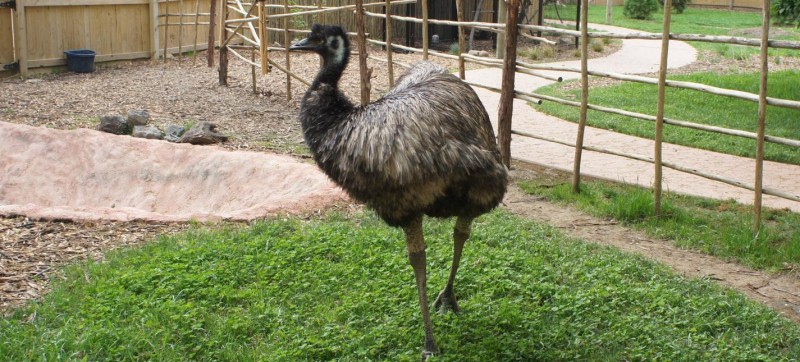Emu - Dromaius novaehollandiae


Habitat:
They are most common in coastal ranges to high in the snowy mountains. Usually found in savanna woodlands.
Range:
Australia
Activity Cycle:
Diurnal
Features:
They have small wings and very long necks. Emus have brown to grey-brown plumage of shaggy appearance; the shafts and the tips of the feathers are black.
Size:
Emus are large birds. The largest can reach 4.9-6.2 feet in height. Emus weigh between 66–132 pounds.
Social Structure:
Emus are largely solitary, and while they can form enormous flocks, this is an atypical social behavior that arises from the common need to move towards food sources.
Life Expectancy:
10-20 years in the wild but up to 35 years in captivity.
Diet:
They eat a variety of native and introduced plant species; the type of plants eaten depends on seasonal availability. They also eat insects, including grasshoppers and crickets, lady birds, soldier and saltbush caterpillars, Bogong and cotton-boll moth larvae and ants.
Reproduction:
Emus form breeding pairs during the summer months of December and January, and may remain together for about five months. Mating occurs in the cooler months of May and June. The male emu does most of the incubation which lasts 55 days. He does not eat, drink, or deficate while incubating. Once the chicks hatch, they are active and will leave the nest within a few days. Females will go mate with other males, possibly laying several clutches of eggs. The young stay close to the male for 4 months and leave between 6-24 months. The young are nearly full grow at 1 year but don’t reach sexual maturity until 2 years of age.
Status:
There is very little concern for the conservation of emus. They are listed at the least concern level on the conservation status scale.
Interesting Facts:
- Second largest bird by height in the world
- Flightless birds
- Can sprint at speeds up to 30 mph and jump 7 ft straight up
- Able to swim if necessary
- Largest bird native to Australia
- On hot days, Emus pant (like a dog) to decrease body temperature
- Calls consist of booming, drumming and grunting. The booming is created in an inflatable neck sac and can be heard up to 1.2 miles away.
- Groups of birds known as ratites. They are the most primitive of the modern bird families. Their family includes ostrich and kiwi.
- Emu’s tail feathers aren’t soft and can be rattle to scare off predators.
Video:
Prices
- Adult (13 and over)$12.50
- Child (2 - 12)$9.00
- Child (1 and Under)FREE
- Senior (65+)$11.50
- Active Military$11.50
We begin transferring animals to evening (off exhibit) holding at 4:30 each night.
Find Us
2320 N. Prospect Rd.
Peoria, IL 61603
Phone: 309-686-3365
Open Daily 10:00-5:00
Last admission at 4:30
